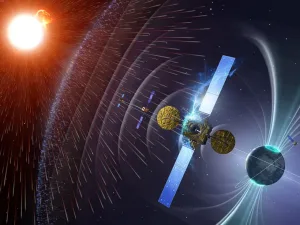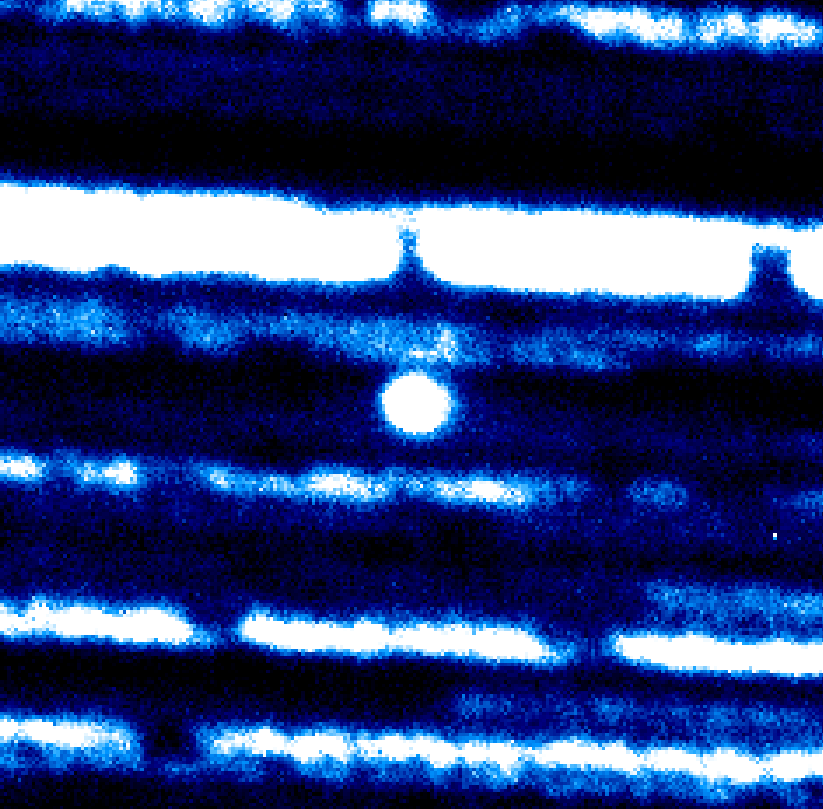
collage drawing showing high-energy ions from the Sun interacting with the Earth’s magnetosphere and attacking the electronics of satellites in orbit around the Earth
“A review of Solar Energetic Particles prediction models” – under this title, a publication appeared on ScienceDirect, Elsevier’s leading platform for peer-reviewed scientific literature. The international team of authors in the study includes scientists from the Institute of Astronomy with NAO – BAS: Assoc. Prof. Kamen Kozarev, Assoc. Prof. Rositsa Miteva, Sen. Asst. Prof. Momchil Dechev and the PhD student from Egypt Mohamed Nedal.
Solar Energetic Particles (SEPs) are streams of protons, electrons, and ions accelerated to high energies in the huge eruptions on the Sun’s surface and which spread throughout the solar system, “surfing” on the interplanetary magnetic fields. They are of scientific interest because they are the product of various physical processes from the corona to interplanetary space and provide insights into particle acceleration and transport processes that are broadly applicable to astrophysics.
From an operational perspective, SEP events pose a radiation hazard to aviation, satellite electronics and human space exploration – particularly for missions beyond Earth’s protective magnetosphere, including to the Moon and to Mars. It is therefore critical to gain a better understanding of the processes that lead to the ejection of high-energy particles into the heliosphere and to use this understanding to develop and improve prediction capabilities to support the operational activities of space agencies and space companies.
Many SEP models exist or are under development, with a wide variety of approaches and objectives. These include computationally intensive physics-based models; fast and lightweight empirical models; machine learning-based models; and mixed-model approaches. The purpose of this document is to summarize all SEP models currently developed in the scientific community, including a description of the model approach, input and output data, free parameters, and any published validations or comparisons to data.
“In order to investigate the acceleration and transport of particles in the early stages of solar flares, we have developed and completed a prototype and various scientific aspects of a chain to model and predict heliospheric SEPs between the Sun and the Earth’s circumstellar space, states Assoc. Prof. Kamen Kozarev from the team of scientists from the IA with NAO. “It is physics-based and driven by telescopic observations of coronal flares and in situ measurements of suprathermal particles – the Solar Particle Radiation Environment Analysis and Forecasting – Acceleration and Scattering Transport (SPREAdFAST Kozarev et al. 2022).
SPREAdFAST combines in a chain detailed extreme UV (EUV) telescopic observations of coronal shock waves (also known as coronal bright fronts or CBFs) with modeling of interacting coronal plasma and SEP acceleration and interplanetary transport. It is a chain of data-driven analytical and numerical models to simulate: the dynamics of large-scale coronal shock waves driven by CMEs; particle acceleration in the corona; and their propagation in the heliosphere to the Earth.
The publication in the prestigious platform for science, health and medical issues is available online, like more than 1.4-million open-access texts on ScienceDirect.com
https://www.sciencedirect.com/science/article/pii/S0273117722007244





